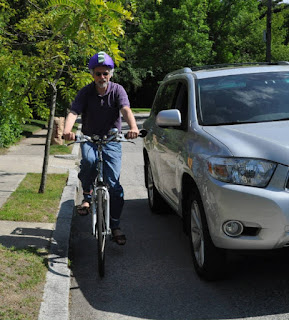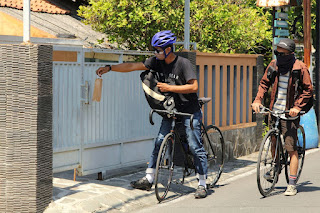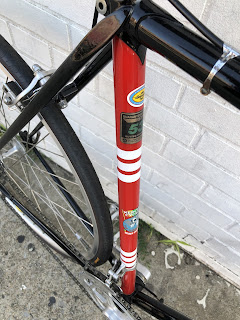I don't have the body I had when I was 22.
At that age, my gender affirmation surgery was nearly three decades in my future. (I didn't know I had a future!) But that's not the only way in which my form has shifted over the years.
Of course, everybody's body changes over the years. Some people mourn that: They wish for the "ideal" body they had when they were young--whether or not they ever fit such an image.
While some segments of society are beginning to recognize that few, if any, of us remain at size four (I'm talking dress, not jersey, sizes!) in our fourth, fifth or sixth decades, acknowledgement has come that some people never mirrored the images presented to us in fashion magazines--or bike ads--even in their youth, through no fault of their own, has been slower in coming.
The notion that cyclists, dancers and other athletes and performing artists have to conform to a particular body types discourages some from performing such activities. It also triggers eating disorders and other mental health issues in some participants.
That is something Olivia Ray is trying to address. The 22-year-old professional cyclist from New Zealand has volunteered to be part of a discussion of mental health awareness hosted by Rally Health, a sponsor of her team (Rally Cycling). "I think we get stuck on an ideal image, the holy grail of a particular body type," she says. "Finding what makes us happy and what makes us feel most empowered by what we look like is, I think, the biggest thing," she explains.
From ages 3 to 16, she was enrolled in ballet, tap and jazz dance programs. So she has experienced, in several venues, the pressure to conform to a particular body type. While she concedes that in some instances, such as riding up a hill, it makes sense to carry less weight, "there is a fine line between what's beneficial to performance and harming yourself." Obsession with weight can also cause reproductive health problems and other health issues for women, she points out.
One solution, she believes, would be to focus more on nutrition. "If you're not giving yourself enough energy" during the ride or "enough fuel post-ride," she explains, "you will feel bad, you will feel like crap, and you won't want to keep riding"--no matter how well you fit the image of cyclists perpetrated in popular media.





































